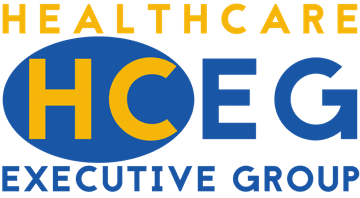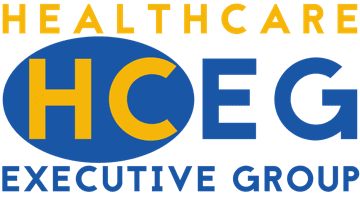 Setting the Stage
Setting the Stage
For those of you not familiar (or more appropriately heavily addicted binge watchers) with the hit series Game of Thrones on HBO, it is a story about the rise, fall, shifts and drifts of power within and between kingdoms, families and characters in a fictional medieval period. Make no mistake, even with all of the current technology and decades of knowhow available, the current healthcare system and process is feudal and the experience is draconian overly complex, hard to access and navigate, confusing and costly to all stakeholders. Consumers feel like they are being left hanging in the stocks (a medieval punishment device) in the town square when it comes to the current experience and costs associated with their health benefits and related purchases.
The good news, we are on the verge of emerging from this archaic, high resistance to change era into the next golden age of healthcare. E-commerce is the key that ignited change in other major industries (ex. banking and retail) and led to a significant spike in growth, improved experience, better efficiency and reduced costs. E-commerce and medical shopping are poised to have that same impact on healthcare.
Crossing the Gulf of Grief – Consumerism initiative driving healthcare
According to CMS Office of Actuary, of the $2.9 Trillion spent on healthcare in 2013, $381 Billion of that came directly out of consumer’s pockets for expenses other than healthcare premiums. While a significant portion of the $381 Billion was spent on co-pays, an increasing amount was spent on full cost healthcare from credit, debit, cash accounts or HSAs.
Continuing with the Game of Thrones analogy, the up and comers in a kingdom called Mereen are trying to create a better, more equitable society by challenging legacy cultural norms and the existing ruling factions. The citizens of Mereen are separated from the current centers of power think government payers, commercial payers and providers–by the Gulf of Grief. I liken healthcare consumers to the citizens of Mereen. The Mereen citizens are starting to realize their power yet struggling with becoming more self-governed and having increased voice, influence and decision making abilities. Sound familiar
Just like the citizens of Mereen, healthcare consumers will have to cross the complex, confusing and surprising currents of the Gulf of Grief to become sufficiently self-directed with less than exact information and imperfect navigational tools unless E-commerce, medical shopping and retail principles are more widely adopted by payers and providers.
Price, quality and access transparency to support the consumer experience
According to recent studies, 88% of healthcare consumers want to know their out-of-pocket costs before receiving health services. Only 46% of consumers are happy with their CDHP, HDHP benefits. The lack of insight into the true total cost of care pre-service is the #1 point of dissatisfaction among healthcare consumers. These data points above, as well as other indicators, point to an increased need for E-commerce and medical shopping initiatives.
By example, annual enrollment is a huge administrative burden on payers and confusing to most consumers. It makes sense to improve it. In my opinion, a disproportionate amount of resource investment and focus, especially in public and private exchanges, has been placed on enabling online benefit shopping and elections which typically happens 1-time per plan year. Would consumers rather have an online, more retail experience for shopping, comparing and electing their benefits Sure.
But, do consumers better prefer and need an E-commerce or medical shopping retail solution for how they utilize their benefits over an online enrollment solution Yes, consumers prefer E-commerce and medical shopping over online enrollment is what my informal user experience research shows. If the name of the game is to attract, acquire and retain policyholders for payers and patients for providers, then the benefit utilization experience is the primary area needing investment focus, improvement and automation. Commercial healthcare consumers on average access and utilize their benefits 13 times per year. Using the logic above of 1 enrollment experience versus 13 or more utilization experiences per year, wouldn’t logic indicate that payers and providers should prioritize and focus more resources on E-commerce and medical shopping initiatives.
If this is true, why are a disproportionate amount of payer resources tied up in online enrollment projects The answer is regulation. An online enrollment experience is mandated for public exchange benefits hence the resource prioritization on it. Lesson to be learned, healthcare and many other heavily regulated industries (ex. banking) typically do very little voluntarily in advance of regulation. That is why 9 states have or are considering transparency initiatives. That number is expected to grow. I contend that a transparency tool doesn’t go far enough in meeting the needs and expectations of healthcare consumers. The E-commerce platform will leapfrog traditional transparency tools and modernize traditional provider contracting, claims infrastructure, collections and payment processing which could save the healthcare industry $235 Billion.
Bend the cost curve in both medical and administrative expenses
PwC notes three factors that serve to “deflate” the 2016 medical cost trend: (1) The Affordable Care Act’s looming Cadillac tax on high-priced plans which is accelerating cost-shifting from employers to employees to reduce costs; (2) Greater adoption of virtual care technology that can be more efficient and convenient than traditional medical care; and (3) New health advisors helping to steer consumers to more efficient healthcare.
With respect to 2015, Milliman found the cost of healthcare for a typical American family of four covered by an average employer-sponsored preferred provider organization (PPO) plan is $24,671, up from $23,215 in 2014. The 2015 family costs works out to $2,055 on a monthly basis. Total employee cost (payroll deductions plus out-of-pocket expenses) increased by approximately 43% from 2010 to 2015, while employer costs increased by 32%. Of the $24,671 in total healthcare costs for this typical family, $10,473 is paid by the family, $6,408 through payroll deductions, and $4,065 in out-of-pocket expenses incurred at point of care. Overall, the U.S. healthcare economy is seeing increases in premium rates and drug costs, and decreases coming from efficiencies in virtual care and choosing lower cost options.
The primary drivers of cost reduction in most industries, including healthcare, are automation, competition and multiple or alternative channels of consumption or distribution. According to MDLive, a leading telehealth solution provider, 90% of PCP visits can be addressed by telehealth. SpendWell Health has observed 12 27% lower health service prices by providers participating in E-commerce marketplaces with upfront patient responsibility collections versus traditional network contract fee schedules and collections. An E-commerce or medical shopping solution with embedded telehealth has the potential to impact approximately $101 Billion of U.S. healthcare spend. Using these market principles and applying them to healthcare provides strong supporting evidence for E-commerce or medical shopping with embedded telehealth being one of the best and nearest term approaches to improving consumer experience and bending the cost curve.
About SpendWell Health
SpendWellTM is the leading health care e-commerce solution that empowers insured consumers to shop, compare and buy routine health services at actual prices. SpendWell’s online marketplace integrates benefit plans, removes consumer anxiety about surprise bills with upfront payments, eliminates patient collections risk for providers and reduces administrative inefficiencies and costs for payers. SpendWell transforms the traditional health care model for consumers, providers, employers,health plans and administrators into an online retail experience. SpendWell’s nationwide community of providers includes medical, dental, vision, behavioral health, chiropractic, alternative care, imaging and more. SpendWell is a wholly owned subsidiary of Cambia Health Solutions, Inc. Learn more at CambiaHealth.com. For more information about SpendWell, visit SpendWellHealth.com.

 Setting the Stage
Setting the Stage

